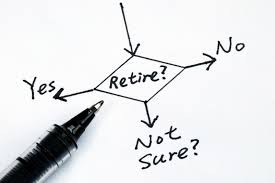The super decision that could cost Aussies $120,000 in retirement
Written and accurate as at: Jul 14, 2023 Current Stats & Facts

Back in 2020, government and industry mobilised to support households and businesses to keep the COVID pandemic from wrecking the Australian economy. Lifelines came in the form of the JobKeeper Payment, eviction moratoriums, and rock-bottom interest rates — just to name a few. But one measure in particular has arguably left some Australians worse off — the COVID-19 Superannuation Early Release Scheme.
The scheme allowed eligible Australians to withdraw up to $20,000 of their super across two tranches. Around 3 million people opted in, draining super accounts of a combined $37.8 billion.
Now, a study released by the Australian National University (ANU) and George Washington University shows that decision could cost around $120,000 at retirement in today’s dollars.1
According to the study, around three quarters of applicants withdrew the full $10,000 in both rounds, while many of those who withdrew smaller amounts still emptied their accounts completely. While the scheme was intended to help pay for essentials, many people used a portion of their withdrawn amount for discretionary item spending, such as clothing, furniture, restaurant food, gambling and alcohol.
While the hit to super balances might be difficult to undo, for most people it won’t be too late to get their balance back on track. If you withdrew all or part of your super during the pandemic period, or you’re worried your super balance is too low and are looking for ways to grow it, here are a few options to consider.
Salary sacrificing
One way you might be able to restore your balance is by making super contributions from your pre-tax income. This can be advantageous, since super contributions are generally taxed at a rate of 15% (or 30% if your income is higher than $250,000) — much lower than most income tax rates. Of course, salary sacrificing means you’ll have less take-home pay each payment cycle, so make sure to consider your regular cash flow needs before entering into any arrangement with your employer.
Keep in mind that salary sacrificed contributions will count towards your concessional contributions cap. The cap is currently set at $27,500 (although you may also be eligible to carry forward unused caps for up to five previous financial years depending on your total superannuation balance). Any excess contributions will be included in your assessable income for that year and taxed at your marginal tax rate — and if you do not elect to withdraw them, they will be counted towards your non-concessional cap.
Personal contributions
Another option is to direct money into your super account from your post-tax income. If you are under 75, you are allowed to make up to $330,000 worth of non-concessional contributions in a financial year, so long as you haven’t already used the bring-forward arrangements2 and your total super balance isn’t $1.9 million or higher. What’s more, the Government is letting individuals who made use of the COVID-19 early super release scheme recontribute those amounts without them counting towards their non-concessional contributions cap.3
You may also be able to apply for a tax deduction on these amounts, but they will then count towards, and be limited to, your concessional contributions cap (like salary sacrifice contributions above). To do this, you’ll need to fill out a Notice of Intent form and submit it to your super fund. If this is done before you lodge your tax return, before 30 June of the following financial year, or before you move money out of the super fund (whichever comes first), your after-tax contributions will be treated like pre-tax contributions and taxed at 15% or 30%.
Downsizer contribution
If you’re looking to sell your primary residence and purchase a smaller one, you may be able to make a downsizer contribution, which involves putting up to $300,000 from the proceeds of the sale into your superannuation account. You’ll have to be aged 55 or older and have owned your home for at least ten years, and the relevant forms will need to be submitted to your super fund prior to or at the time of making the contribution.
While downsizer contributions are limited to $300,000 per individual lifetime, they won’t count towards your concessional or non-concessional caps. And if you have a spouse who also meets the eligibility criteria, they might be able to take a further $300,000 from the sale proceeds and put it into their own super account.
Super help for low-income earners
Low income earners who make a non-concessional contribution of $1,000 to their super funds may be eligible for a government co-contribution up to a maximum of $500 (the exact amount will depend on your income and the size of your contribution). To be eligible, you’ll need to tick a few boxes, including being under the age of 71, passing the relevant income tests, and having a total super balance less than $1.9 million.
If you’re on a low income or not working at all, your spouse can also top up your super by making a non-concessional contribution into your account. To encourage contributions of this kind, the Government provides a tax offset of 18% on the first $3,000 of spouse contributions for people whose spouses earn less than $37,000 p.a.
These are just some ways you might be able to get your super balance looking healthy again. For advice tailored to your goals and circumstances, consider speaking to a professional financial adviser.
Sources
1 https://static1.squarespace.com/static/59b0bb01f9a61e09f11924fa/t/6411ca0b3300053912433365/1678887436078/Early_pension_withdrawal_as_stimulus.pdf
2 https://www.ato.gov.au/individuals/super/in-detail/growing-your-super/super-contributions---too-much-can-mean-extra-tax/?page=5#Bringforwardarrangements
3 https://www.ato.gov.au/super/apra-regulated-funds/in-detail/apra-resources/re-contribution-of-covid-19-early-release-super-amounts/












